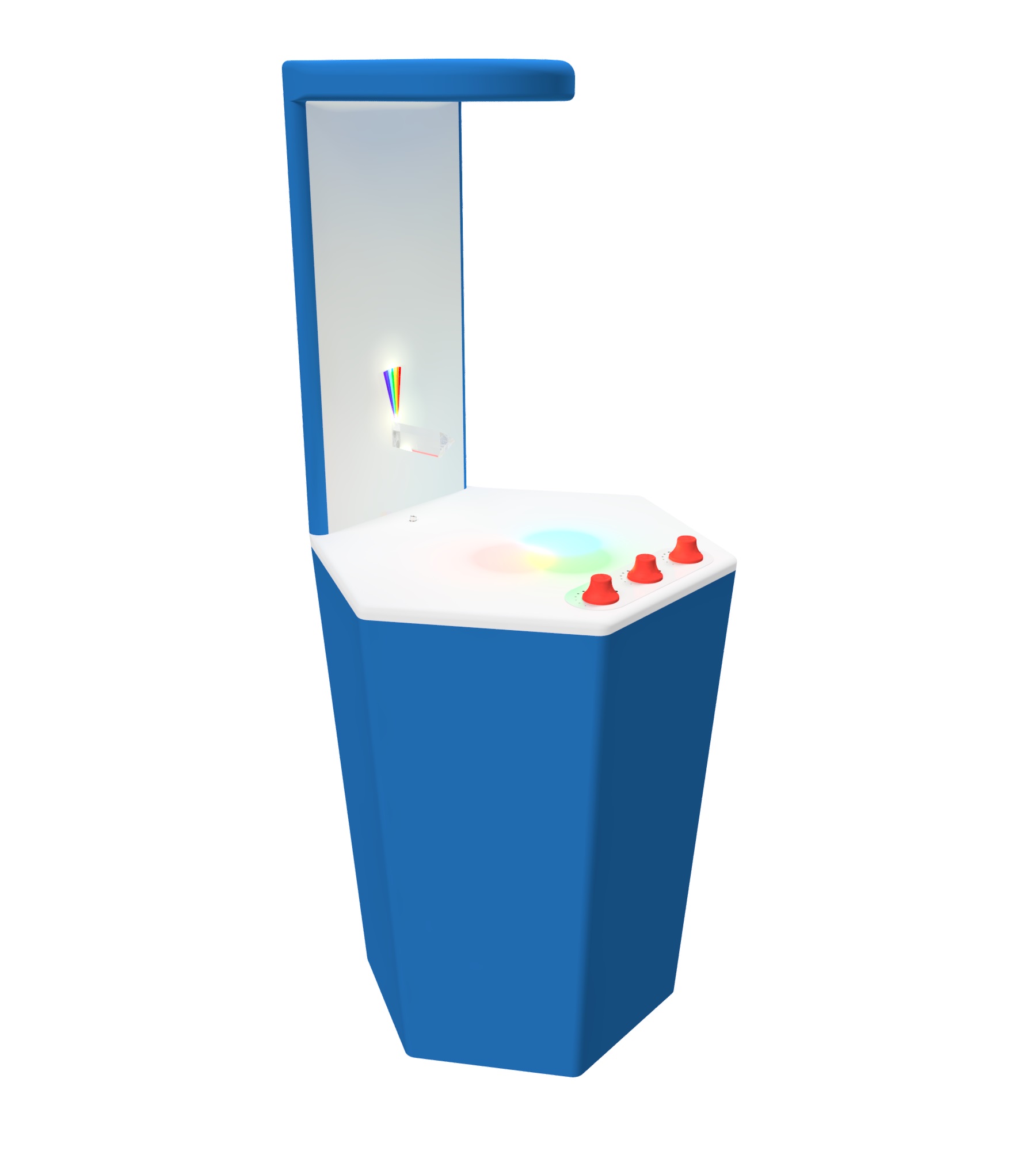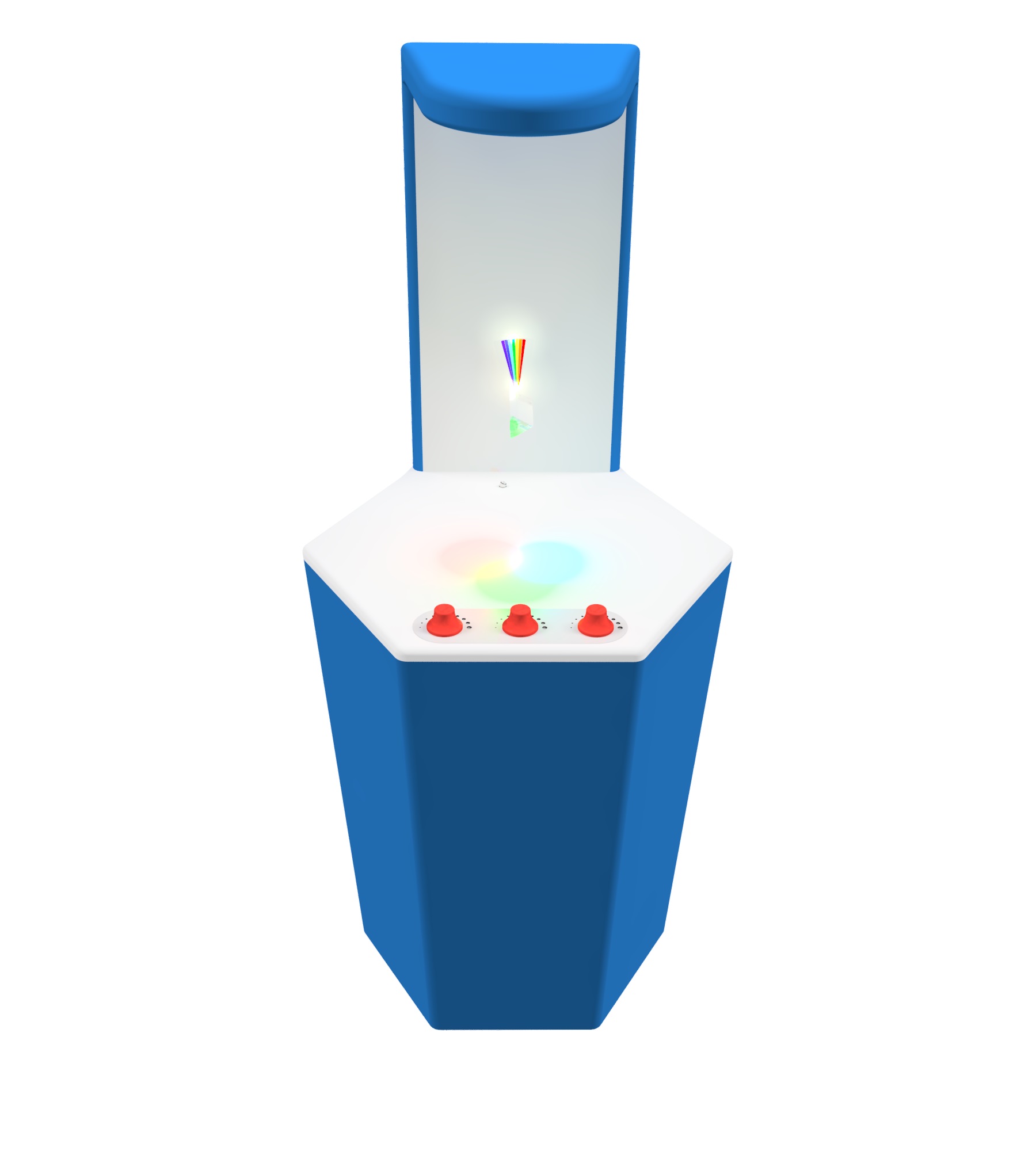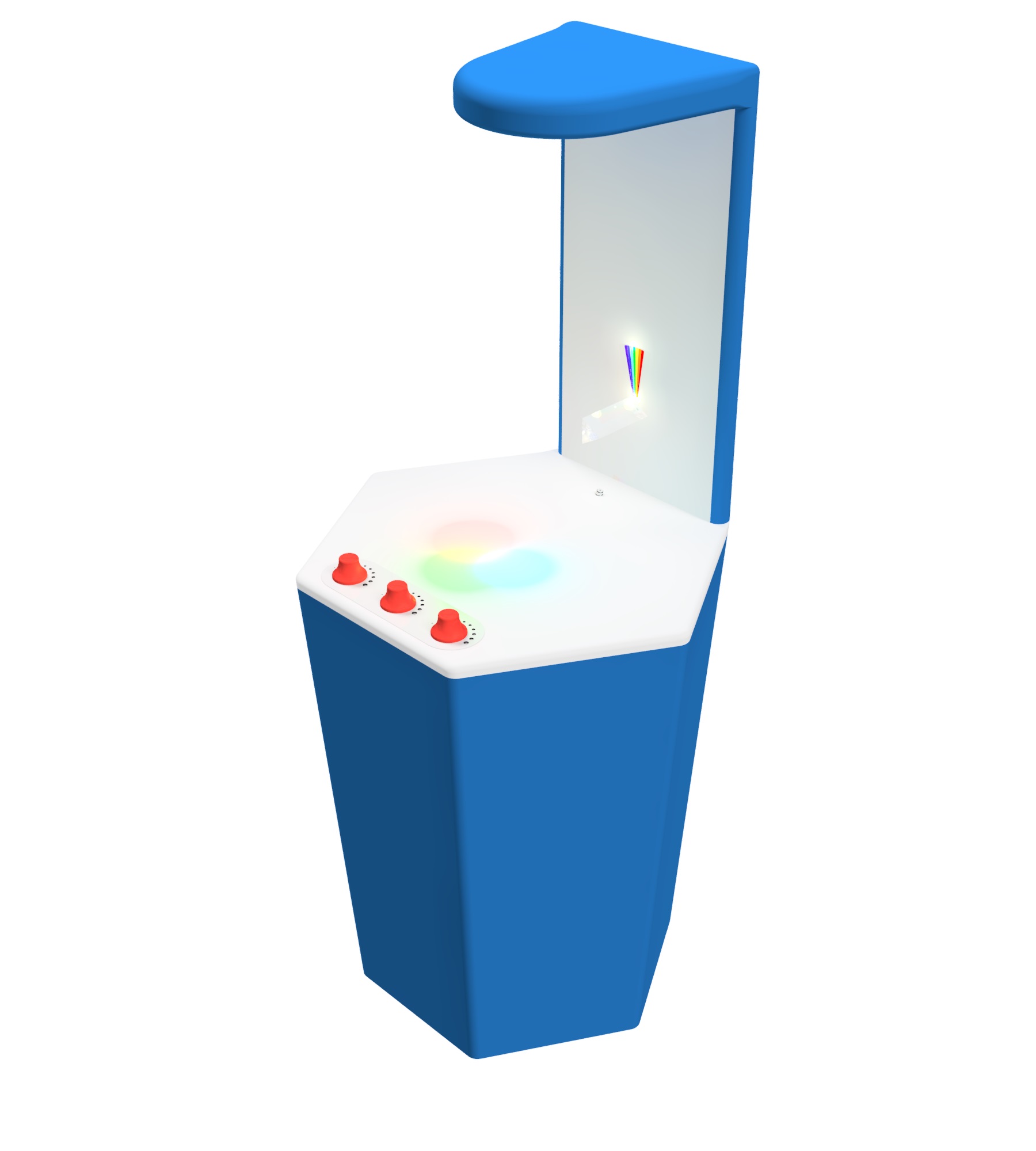Colourful light
How it works:
The exhibit presents some phenomena concerning visible light.
The first one is colour synthesis, meaning the emergence of new colours, from the mix of basic ones. Each of the three embedded knobs adjusts the intensity of one of the basic colours: red, green and blue. mixing those three together creates white light. The effect can be observed on the flat surface in front of the knobs.
The next phenomena are the light refraction and dispersion occuring in the prism. The prism is mounted rotatably on the back wall of the exhibit. The white light beam is projected from underneath it, so that the dispersed colourful beams are visible on the screen over the prism. To be able to observe this, the prism needs to be previously rotated to the correct position.
How it’s made:
The exhibit stands on a base, 750 mm height. In the rear part, there is a wall, acting as a screen to observe the light coming out of the prism. In the upper part of the wall, three RGB LED lamps are mounted. In the front of the exhibit, there are three knobs to adjust each of the basic light colours: red, green and blue. The design is made from lacquered MDF boards.



